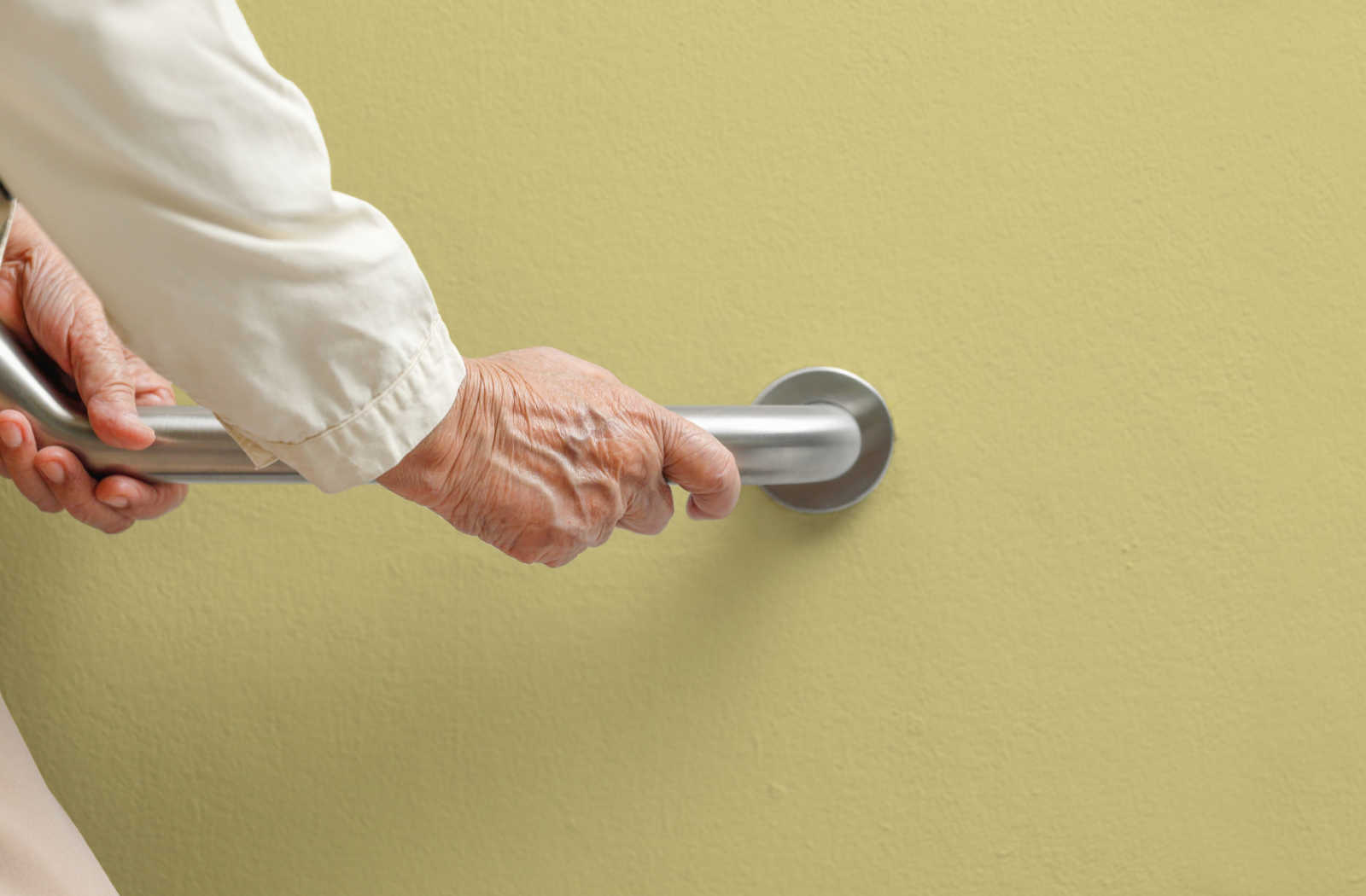Home is where you should feel the safest, regardless of your age.
All homes eventually need some upgrading to stay safe throughout our lives. Simply put, falling doesn’t have to be a part of getting older. Whether you’re moving somewhere new or looking to improve your current home, we’ve got a handy checklist to make your home a comfortable and secure place to live.
Common Causes of a Fall at Home
A big concern that many Americans face is the risk of falling at home. Over 3 million people go to the emergency room from a fall-related injury every year. That might seem like a scary number, but the good news is falls are easy to prevent with the right safeguards in place.
Many times, falls happen as a result of clutter on the floor, slippery surfaces, and other tripping hazards that are easily avoidable. Sometimes, falls happen when we lose our balance or can’t see properly. Fortunately, these common causes have easy fixes that can be done in most homes.
Home Safety Checklist
Bedroom
- Put a lamp next to the bed that’s easy to reach
- Plug in an automatic night-light for assistance in the dark
- Keep a monitor by the bed (to alert loved ones if you need them)
- Ensure the bed is the right height for you
- Make sure any rugs are non-slip
- Keep all cords neatly tucked away
- Remove any furniture that impairs your movement
Bathroom
- Put a non-slip rubber mat on the tub/shower floor
- Ensure grab bars are secured to the tub and next to the toilet
- Use non-slip rugs on the bathroom floor for extra support
- Consider installing a foam rubber faucet to prevent injury
- Ensure there’s a shower stool and handheld nozzle installed
- Consider a walk-in tub and extra-wide doors for increased accessibility
- Keep an automatic night-light plugged in to light your path at night
- Make sure the bathroom is well-lit
Kitchen
- Ensure food, dishes, and cookware are accessible*
- Keep a balanced step-ladder readily available
- Store sharp/heavy items in closed cabinets that are easy to reach
- Make sure the room is well-lit
- Use a non-slip, water-absorbent mat at the sink
* “Accessible” can mean different things to different people, but usually this means storage should be waist-level to avoid unnecessary bending and reaching.
Living Room
- Ensure walkways are clear
- Keep cords/wires neatly tucked away to avoid tripping
- Remove any low furniture
- Use decals to help identify glass doors/windows
Floors
- Make sure floors and hallways are clear of clutter
- Only use rugs with non-slip backing
- Tape cords to a wall to avoid tripping
- Look for spills when entering a room
Stairs
- Keep stairs clear of clutter
- Fix loose/uneven steps
- Ensure all stairs have a working overhead light (with a switch at the top and bottom)
- Check any carpet and make sure it’s secured to each step
- Repair any loose/broken handrails
- Make sure handrails are secured along each side of the stairs
Additional Prevention
- Check all alarms have working batteries*
- Ensure phones are easy to reach (consider putting one near the floor)
- Keep emergency numbers in large print near the phone
- Consider wearing an alarm device if you’re often home alone
- Have slippers available with rubber bottoms
- Decorate with solid, high-contrast colors help identify edges and corners
* Some fire departments will change your fire alarm batteries for you if you contact the non-emergency line.
Prevent Injuries by Practicing Healthy Habits
- Exercise regularly to improve balance
- Determine if any medications make you drowsy or dizzy (prescriptions and over-the-counter)
- Schedule annual eye exams and keep glasses nearby
- Schedule annual checkups with your doctor
- Ensure any hearing aids are working properly
- Ask your doctor about adding vitamin D to your regimen to keep your muscles strong
- Stay well-hydrated throughout the day
- Contact your doctor if you notice any changes in your vision, hearing, mobility, or balance
Get a Professional Assessment
If you’re looking to go one step further, consider hiring a home safety expert to assess your home. A social worker or certified aging-in-place specialist can come to your home to identify potential safety hazards and suggest improvements. You can get a customized home-modification plan to mitigate any risks inside and outside your home.
Put Your Safety First
Sometimes the right choice for your safety is assisted living. If your home doesn’t offer you a safe, peaceful environment every single day, you may want to consider other options. Whenever you need answers, we’re here to help. Reach out to us at any time at All American Assisted Living in Raynham to see if assisted living is the best choice for you.



